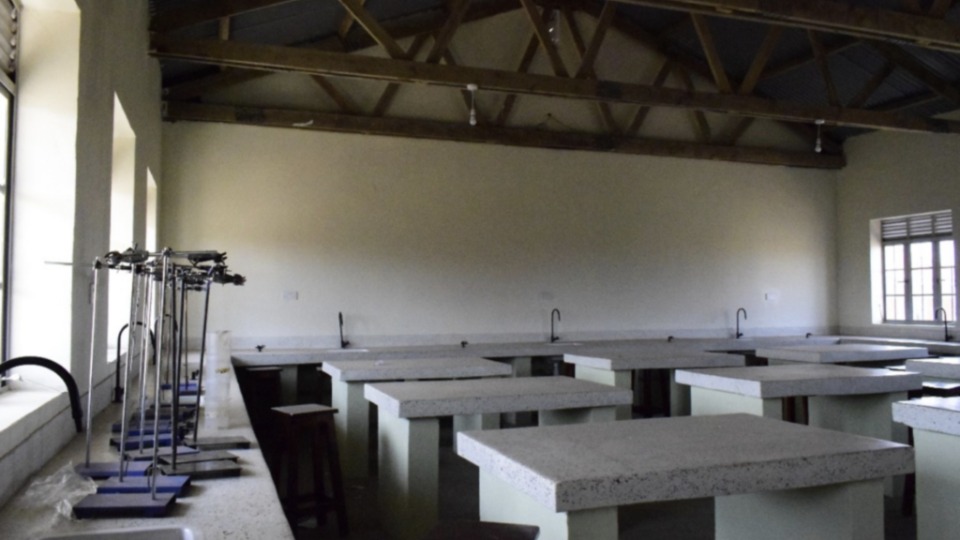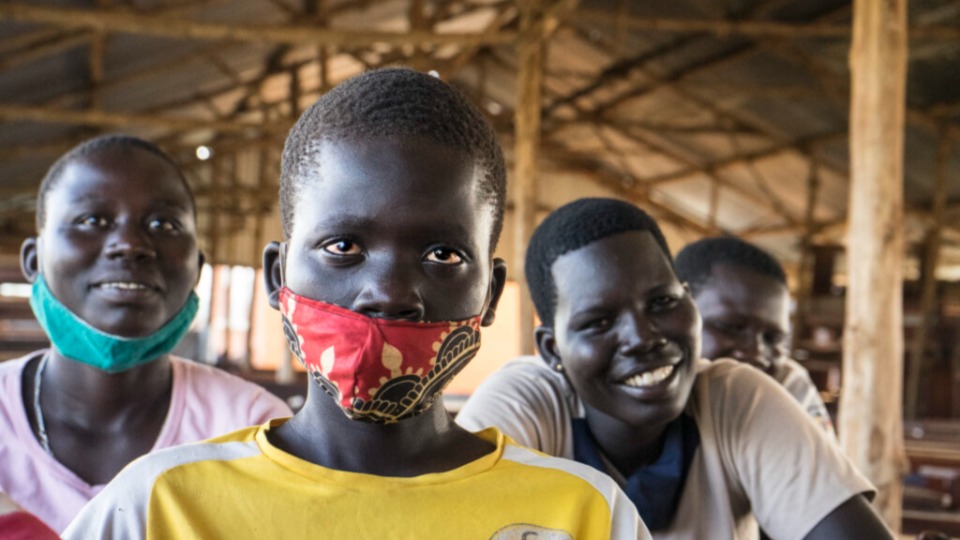
This story appears here courtesy of TheChurchNews.com. It is not for use by other media.
By Mary Richards, Church News
School children in Uganda returned to school in January for the first time in almost two years. COVID-19 lockdowns not only kept children from learning, but they also disproportionately hurt girls.
“It was very hard to study from home like I do in school,” said one girl.
“The pandemic made my life miserable,” said another, explaining how she fell behind in her studies.
Other girls described food shortages and staying home to garden and take care of other children.
These girls’ stories are just some shared with Jill Drzewiecki, a gender-responsive education specialist with Jesuit Refugee Service, or JRS. Drzewiecki spoke to the Church News about the efforts of JRS in collaboration with The Church of Jesus Christ of Latter-day Saints to make a difference in Uganda.
‘A Huge Need’
While many organizations focus on making sure boys and girls have access to primary schools, a huge gap also exists for girls as they get older. JRS has a goal to close the gender gap in secondary education.
Chronic poverty and cultural rigidities are some of the barriers that deny girls and women educational opportunities.
“If families have to make a decision between sending a boy to school or sending a girl to school, they will often send the boy to school,” said Drzewiecki.
Many girls are made to marry young, tasked with taking care of younger siblings or given more chores such as gathering firewood and collecting water. Lack of proper menstruation products and other health concerns can also keep girls out of school.
At the same time, a lack of educational infrastructure is another barrier to education. Drzewiecki said Uganda’s West Nile Region needs more secondary schools. Adequate infrastructure and safe educational spaces can be a life-saving intervention in conflict-affected settings.
“The global figure of refugees who have access to education is 34%, while in northern Uganda, it’s 13%, and that’s not just refugees, it’s the host communities as well,” said Drzewiecki. “This area is also the largest refugee hosting area in all of Africa. So there’s a huge need.”
And it increases as the children grow: while 36% of refugee boys were enrolled in secondary education in 2019, only 2% of girls were.
Plan International estimates one in five girls in conflict-affected settings will not finish secondary school. And by 2030, one in three will not be able to read a simple sentence unless interventions are made.
New and Improved Learning Environments

With funding support from The Church of Jesus Christ of Latter-day Saints and other donors, JRS has been increasing and improving secondary school infrastructure in northern Uganda’s Adjumani district — including the construction of girls’ dormitories, washrooms and incinerators in the Mungula and Pagirinya schools, as well a new science laboratory in January 2022.
The girls’ dormitories are constructed at community schools located in areas where cases of early and forced marriage are rampant. The construction of the dorms ensures girls are in a conducive learning environment. The boarding facilities increase girls’ enrollment and prevent dropout.
The new science lab has a capacity of 80 seats among two rooms. It has all the necessary equipment to carry out experiments, allowing students to get hands-on experience of STEM subjects and grasp the lessons more clearly.
The Church has also supported 80 scholarships for girls.
“This is really not just an investment in refugee girls; it’s an investment in the educational infrastructure for the region,” said Drzewiecki, explaining how it will impact thousands of students in the area.
“We’re in this for the long haul,” said Drzewiecki. “We know if girls can finish secondary school that their health outcomes are going to be much better. The health outcomes for their children are going to be much better. The economic outcomes for their families are going to be better, and thus their communities and where they live.”
Collaborating with the Church

Drzewiecki said JRS appreciates working with the Church, which also holds that same long view and is committed to making an impact over a long period of time. They also share many of the same faith-based values.
“None of this would be possible without the support that Latter-day Saint Charities has provided specifically for this project,” said Drzewiecki.
Latter-day Saint Charities is the humanitarian arm of the Church. Funding comes from donations made by members all around the world.
Uganda has one of the largest refugee populations in Africa. The district of Adjumani has 19 refugee settlements alone. And organizations learned from COVID that they must prepare for the next big crisis — more war or natural disasters or drought will again affect girls disproportionately.
And when the world’s attention shifts to other areas in need, humanitarian funding drops for things like education in Africa. “But we’re talking about 1.5 million refugees in this area who are not going home,” said Drzewiecki.
She said leaders with JRS and the Church of Jesus Christ work together so well because they know such a small percent of overall global humanitarian funds goes to education: “I think that’s one of the more beautiful expressions of our faith, that we can say we have a responsibility to be good stewards of these limited resources and to use them to serve.”
Copyright 2022 Deseret News Publishing Company